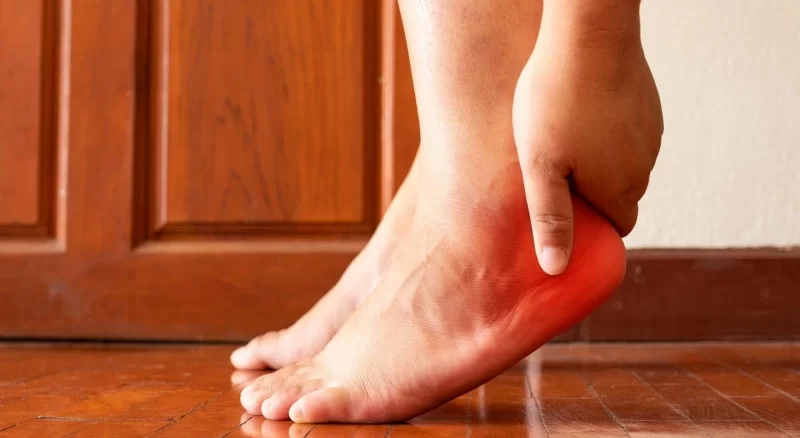Heel spurs are bony tumors that appear underneath the back heel bone inward the foot. This heel condition occurs when there’s pressure on the foot ligaments. In most cases, heel spur isn’t visible and usually patients don’t find out that they are dealing with a heel spur till they suffer from heel pain and go to a physician. Unfortunately this condition can’t be healed. As a matter of fact the best Treatment of heel spurs is non-surgical approaches in order to ease symptoms and signs.
What is a heel spur?
A heel spur (known as bone spur or calcium deposit) is a foot disease which is shaped by a bony growth. This condition develops between the heel bone and the arch.
Usually heel spur begins in the front of and below of the heel. In the end, this foot condition eventually impresses other parts of the foot. They can grow to half an inch. They might not essentially be seen to the bare eye.
Since heel spurs don’t cause ache and pain, and not all heel pain is connected to spurs, diagnosis of heel spur might be really difficult. Thus in case of any pain in the foot, it’s better to visit a foot surgeon in Dubai.
√Read more: What is arthroplasty? its advantages and disadvantages
The cause of heel spurs
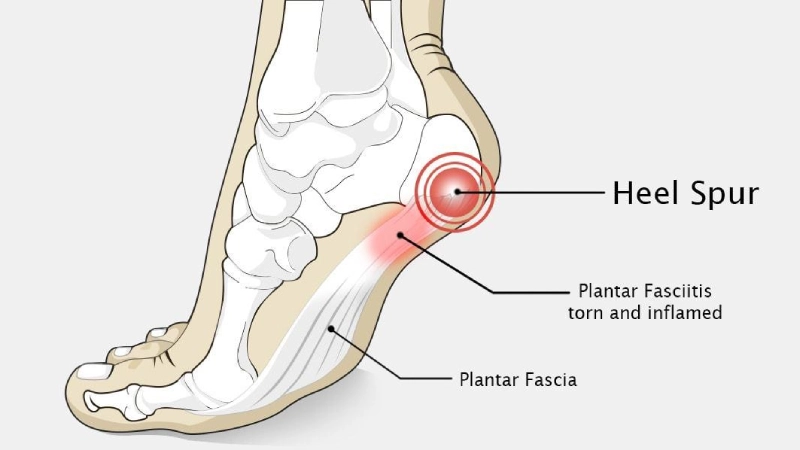
Heel spur is immediately brought by long-term muscle and ligament pressure. Finally, this extreme stress and pressure on the heel bone causes spurs.
Heel spur expands gradually. In other words, These bony growths don’t abruptly become visible after an exercise or a sports event. In fact they happen when the early symptoms such as heel pain is ignored.
Reiterative pressure from jogging, walking, jumping and running on rough surfaces is the most common cause of heel spur. Furthermore they might develop because of wearing unsupportive shoes.
Heel spur could also be occurred because of:
- Heel bruising
- Being overweight
- Wearing poor and unfitted shoes
- Improper walking
- wearing flip-flops sandal too much
Addition to the mentioned causes, one of the important factors is arthritis (all types). Thus if you are coping with any types of arthritis such as rheumatoid, it is recommended to take action for treatment of rheumatoid arthritis.
Often people with heel spurs also suffer from plantar fasciitis. This painful situation copes with the difficult, fibrous tissue which operates between the heel and toes. Having plantar fasciitis enhances the risk for finally extending heel spurs. A big toe surgeon in Dubai will help you with plantar fasciitis.
√Read more: What is an Achilles tendon and why is it damaged?
What are the symptoms of heel spurs?
Symptoms and signs of heel spurs might include feeling pain and swelling and inflammation. Especially at the front of the heel.
The infected area might also feel warmth to the touch. These signs can extend to the arch of the foot. Finally, a small bony protuberance can be seen.
Some heel spurs might have not caused any sign at all. In addition no changes in soft tissues or bones around the heel might not be seen. A heel spur is often found only through X-rays and other exams.
√Read more: Restless Legs Syndrome and Its Symptoms
What are the complications of heel spurs?
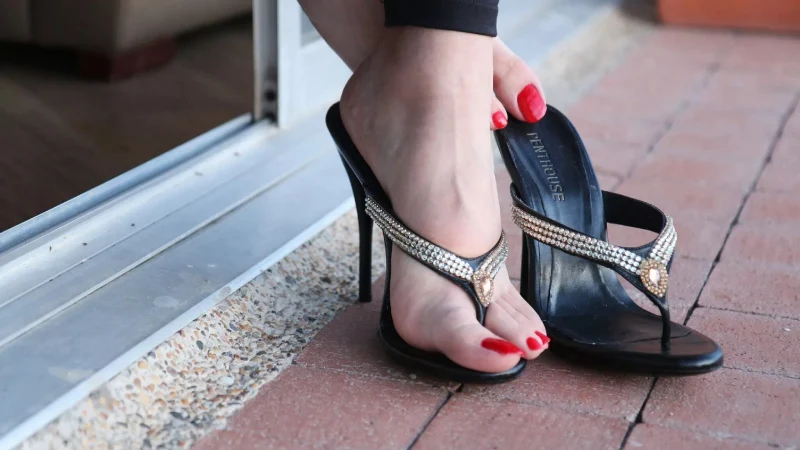
Heel spurs have some complications that include:
Feeling pain while walking
You feel ache each time that your heel touches the ground . At First, the heel ache is alternating; but when it develops, it could be steady.
Gait troubles and lagging
When you feel ache while walking, it influences the way of walking. So you might begin to gait with a limp to avoid feeling more foot pain.
The consequences of abnormal gaiting are more conditions like bunions, sprained ankle, foot fracture and … . In addition you might experience pain in your lower back, knee, and hip.
Weak physical health conditin
When you feel pain during walking, it might hold you from jogging, running, exercising, and doing other activities. So your general health will be in danger.
√Read more: What is osteoporosis and what can you do to prevent it?
How to diagnose heel spurs
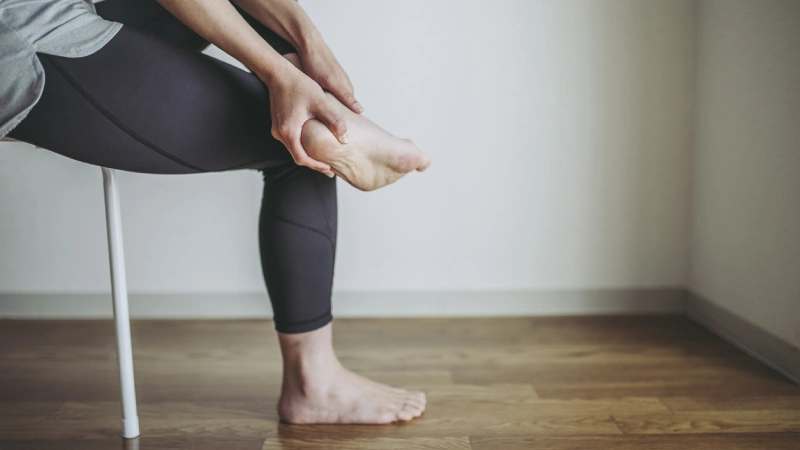
Diagnosing heel spurs without medical exams is difficult. Because the symptoms and signs of heel spur are alike to other foot and heel conditions.
Therefore for diagnosing heel spur visiting a specialist, as an example, an orthopedic or a podiatrist is essential. They can discover a heel spur by doing an X-ray test.
Bony prominence isn’t often observable to the naked eye. So appling diagnostic imaging instruments is necessary.
Before performing any imaging tests, your physician will ask for a physical examination of the foot in order to look for any symptoms of redness or swelling. Furthermore she/he will check for any remarkable tenderness on the foot.
Some physical tests like standing on one foot or taking a walk might be conducted.
√Read more: What is iliotibial band syndrome and what are its symptoms
Heel spur treatment methods
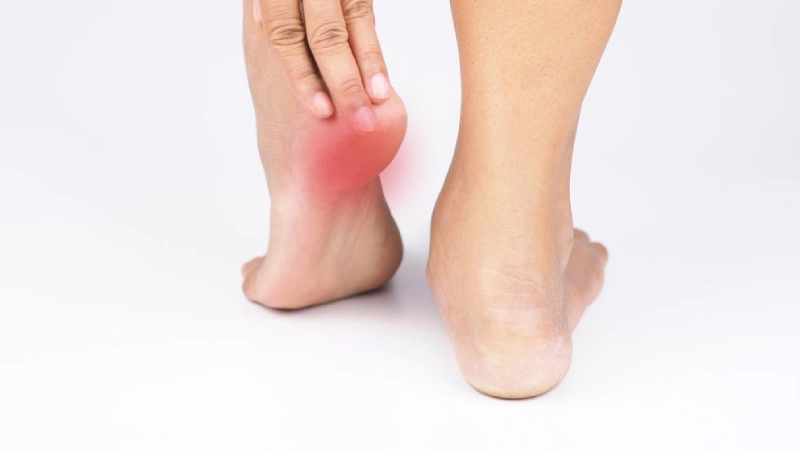
Heel spur treatments firstly include rest and lifestyle changes. Other treatment options are:
Cold compresses
Putting ice packs for about 15 minutes might help release pain through numbing the area. Applying cold compresses can decrease swelling.
Anti-inflammatory medicines injection
For extreme pain, the healthcare provider might recommend corticosteroid injection. This anti-inflammatory shot will ease pain and inflammation.
Over-the-counter medicines
Acute, or temperley, pain can be decreased by taking over-the-counter medicines. These medicines can consist of acetaminophen, aspirin, or ibuprofen.
Talk to your physician if you’re taking any medicines like blood thinners, or you are dealing with liver or kidney problems.
Physical therapy
Your specialist might suggest physical therapy in order to practice exercises to hold long-term pain, typically since anti-inflammatory medicines could be taken for a short time.
These exercises include stretching the heel. The effective time for exercising your heel is at night before bedtime.
Rest
As it was mentioned before, getting rest is one of the most effective treatments.
Not only getting rest appeases acute pain, but also prevents the condition from worsening. It’s typically essential to rest your feet after a long time of standing and doing activities.
Orthotic shoes
Applying orthotic shoe inserts like heel pads, could support your arch, heel and then reduce pain. In addition, using heel pads prevent more wear and tear.
Surgery
Your surgeon might recommend surgery if heel spur pain gets severe and continues. This kind of surgery consists of removing the heel spur.
Main advantage of heel spur surgery is pain reduction and boosts mobility.
Fully recovering from heel spur surgery needs time. The recovery process may consist of:
- Rest your foot and apply ice
- Supportive shoes
- Stretching exercises
Conclusion
Preventing heel spurs needs an enhanced consideration to the general foot health. Be careful of the everyday pressure that is placed on the feet. Give your feet a rest during and at the end of the day. If you experience heel pain after any kind of activity, put ice on the area and rest your foot until it gets better.
Never put pressure through any heel pain that extends.


